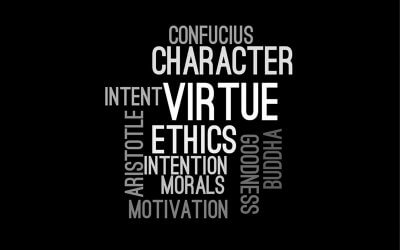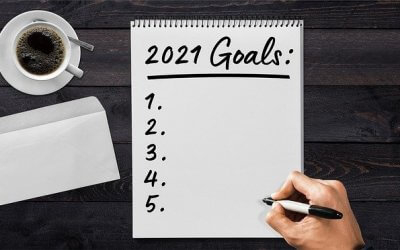Discover how understanding the limitations of averages and embracing probabilistic thinking can improve decision-making and risk management in business.

Where are you?
Last week I discussed how business trends had accelerated 5 – 10 years as a result of COVID, thus whatever the critical trends in your business were in March, take them forward 5 – 10 years, and that is where you are now. This acceleration applies to all companies, but the ones we see most easily are move to online retailing and the death of malls.
If that is where your business is, then as I have also said before you need to:
-
Revisit your BHAG. Hopefully, you have one, and make sure it is still relevant. Your Big Hairy Audacious Goal is more than just “goals,” a true BHAG is clear and compelling and serves as a unifying focal point of effort– often creating immense team spirit. It has a clear finish line, so the organization can know when it has achieved the goal; people like to shoot for finish lines. However, if your BHAG aimed at ten years out, and we have moved 5 – 10 years in the last few months, we may have passed, or it may no longer be relevant.
-
Review your corporate mission and vision statements, again to ensure they are correct given where everything has moved;
-
Look at your “Why.” Is it relevant in a COVID/post COVID world, or does it need changing? Is it a “Why” that has relevance with your future workforce. If you are not sure about your “Why,” here is a link to Simon Sinek’s “Start with your Why” as a refresher. Millennials are here, and regardless of what you think about them, you need them. The good ones will want to work of organizations where they believe in its “Why.” Now is the time to fix it.
-
Take a hard look at your Corporate Culture, is what you live, or are they just pretty words? I have come across many examples over the last twelve weeks were organizations are flouting their cultural beliefs and not even realizing it. Look at your behaviors during this period and have you lived your culture. If not, you need to change one or the other.
-
Develop a new strategy – urgently! As I have said before, not only have we moved forward 5 – 10 years, but the game has changed. There are new rules and players. Thus you need a new strategy.
-
Revisit your capital investment plans. With a new strategy and market, your prior capital priorities are not necessarily correct. You need to revisit your investment plans and ensure that you are focused on investing in technology and processes to keep ahead of your competition.
-
Revisit “How You Make Money.” How You Make Money is a fundamental understanding of every employee in an organization. It must be something simple that everyone understands but drives the appropriate decisions making and behavior. Herb Keller at Southwest Airlines put it best with “Wheels Up.” So how do you make money, and has it changed in this new environment?
-
Revisit your capital allocation. Right now, interest rates are at an all-time low and should remain here for some time. With lower interest rates you need to revisit your capital structure, assets and operations to determine the most efficient capital allocation from a cost of capital and tax perspective and
-
Revisit your operations. Taxes are at an all-time low, but I don’t expect them to remain so as the significant increase in government debt will need financing at some point. So look at your operations and some assets, should you sell them now and reinvest the proceeds more efficiently, given where we are. One of my clients is about to sell his office building and is looking to do a 1031 exchange into a new investment property. While that is the standard consideration; however, if you expect taxes to rise and value of investment property to rise more slowly as the world adjusts to the post COVID landscape, would it be better to pay the taxes now. That is a question each person needs to determine, but one I would ask.
-
Revisit your decisions making process. As we move through a time of significant change and confusion, you need to move the decision making down from the top to where the information is. As I have said before, this is a time for effectively A/B testing outside of just the software world. Having everything flow up and down through the organization slows the decision-making process down too much for such times. To have effective decision making at the front lines, your employees need to know the Mission, VIsion, your Why, How You Make Money, and the Company’s Culture. If they genuinely understand those, they will make the right decisions for the organization.
The most beautiful thing about the current environment is you can change all of these things without too much of an issue. Because of COVID and the adjustments required, Scared Cows can get slaughtered. Prior commitments and beliefs that could not be touched are fair game.
Now is the time to implement John Boyd’s OODA Loop – observe–orient–decide–act.
While developed for military strategy, this is an ideal OODA loop environment. An organization that can process this cycle quickly, observing and reacting to unfolding events more rapidly than the competition, can “get inside” the opponent’s decision cycle and gain the advantage. Raw information or observations of the evolving situation are processed or filtered to drive all decisions regarding the problem.
While everyone is still figuring out what is happening, take advantage of the confusion and move quickly. Those organizations that emerge ahead for this crisis will have market leadership for the next decade.
Copyright (c) 2020, Marc A. Borrelli
Recent Posts
The “Flaw of Averages” Causes Havoc for Businesses
What is Your Strategy, In a Sentence?
If you are banking on the vaccine returning us all to “normal” quite quickly, in the famous words of Dr. Akande, “Hope is not a strategy.” Your organization should be preparing a well-defined strategy for 2021 and beyond. Once you have this strategy, the ultimate question: can you clearly articulate it in one sentence? Distilling your strategy into a single sentence is a powerful tool, both for your legacy and your team effectiveness. Not sure where to start? I offer a plug-in formula to set up your strategy sentence.
Character Matters
“It’s easier to hold to your principles 100% of the time than it is to hold to them 98% of the time.” — Clayton Christiansen. I have often written about the importance of a company’s Core Values. That’s because no matter what words you may have chosen as values, your organization’s Core Values are on display in how leadership and employees actually behave. As I’ve said before, how you have acted in the last twelve months will define your career for the next decade. Your character, and your company’s character, matters.
New Year’s Resolutions, Once More Unto the Breach
The holidays have been even quieter than normal, which has given me plenty of time to reflect on my New Year’s resolutions. Looking at 2021, I decided to use a completely new approach to lay out my goals. The result of my new approach? A highly-detailed, accountable, actually achievable plan for the next year (I think). Wondering what this process looks like?
To Vaccinate or Not to Vaccinate, that is the Question
What do your employees, peers, and leadership team think of the COVID-19 vaccine? Will you require the vaccine, or will you let employees make individual decisions? As a leader, you need to steer the discussion about vaccines in your organization with your Core Values in mind. No matter what strategy your organization takes, the most important factor is going to be how you communicate your decision.
3 Ways You Could be Undermining Your Core Values
Can you answer “Why does your organization exist? What are your core values?” Great. Now, would your latest entry-level employee give a similar answer? How about someone who has been at your company for a year? Your core values give your organization a guiding mission. Many organizations pay this idea lip service, but their true commitment to their core values was tested this year. As we close out 2020, there’s no better time to examine how your organization is approaching your core values.
Are You Prepared for 2021 With Enough Cash?
Companies don’t go bankrupt because they lose money; rather, they run out of cash. Where are we, heading into 2021? First, you can expect your cash to get tighter as we weather the current economic slowdown. Then, with a vaccine on the horizon, you will need to be positioned for growth. If you don’t have the cash you need, have you looked at how you can generate the cash internally? More on how to improve your cash conversion cycle…
Tony Hsieh, a Corporate Culture Icon, RIP
In his work as Zappos CEO and elsewhere, Tony Hsieh believed, and proved, that culture is the most important thing in an organization. According to Hsieh, if you get the culture right, the rest will take of itself. How did Zappos do it? You can take a look at everything from the company’s interview questions, to “The Offer” to leave a position as a new hire. Hsieh believed that a company’s brand is just a reflection of the culture, and his legacy is felt across so many industries.
CEO, Try Thy Hiring System
How does your company hire? I’ve seen the good, the bad, and the surprisingly ugly hiring processes in my career. From the HR email mix-ups to the interviewer watching the World Series while I responded to his questions, I’ve learned that you can tell a lot about an organization simply by examining the hiring experience. Are you chasing away the kind of people you need at your company?
What is Leadership?
What is it, exactly, that great leaders do? There are plenty of overused adages about “leadership” in business. It’s worth examining the tropes around leadership, plus the traits of the leaders who actually leave a mark. Great leaders are forged through adversity, and they leave a legacy. What does that look like in your organization?










